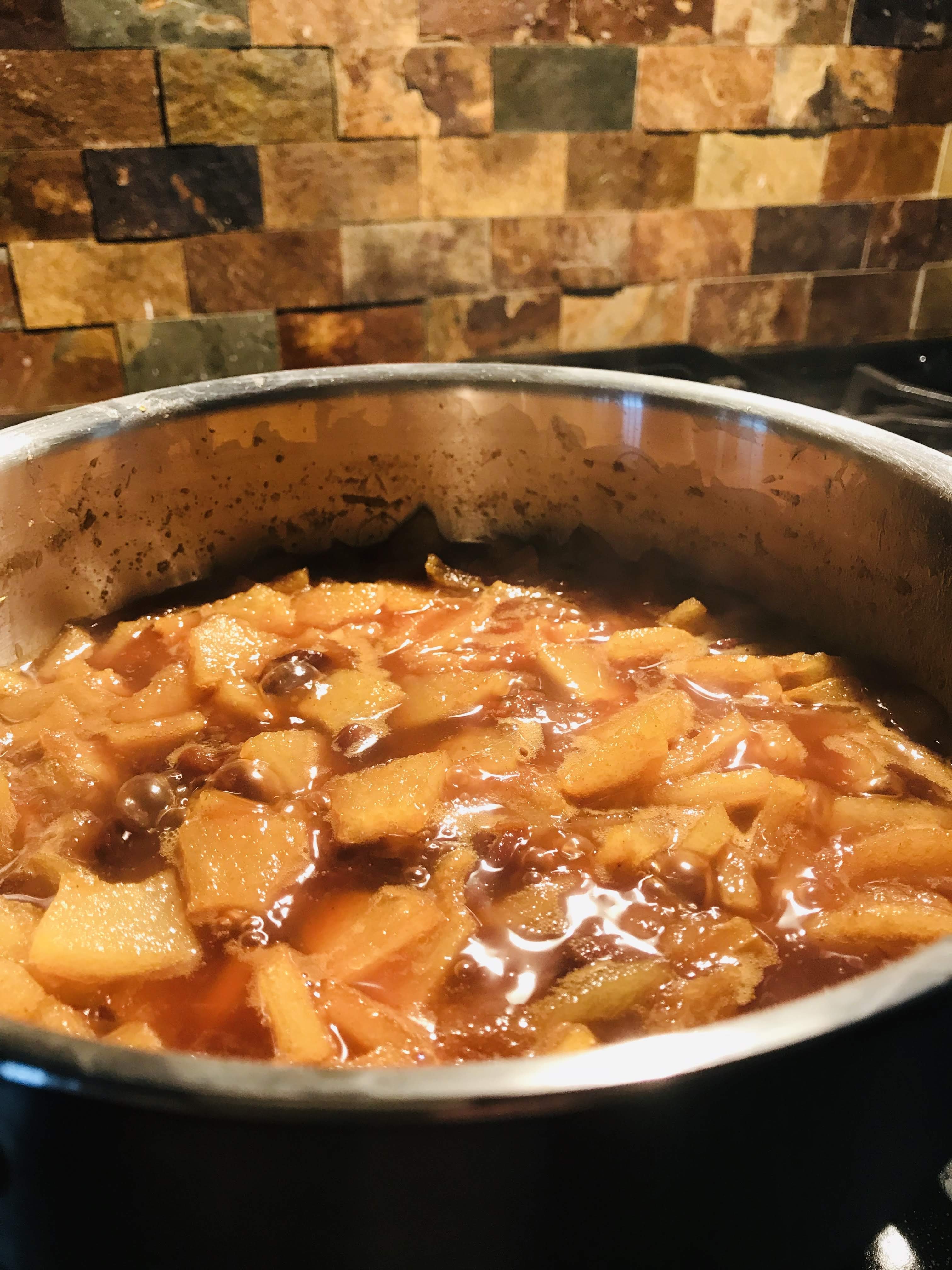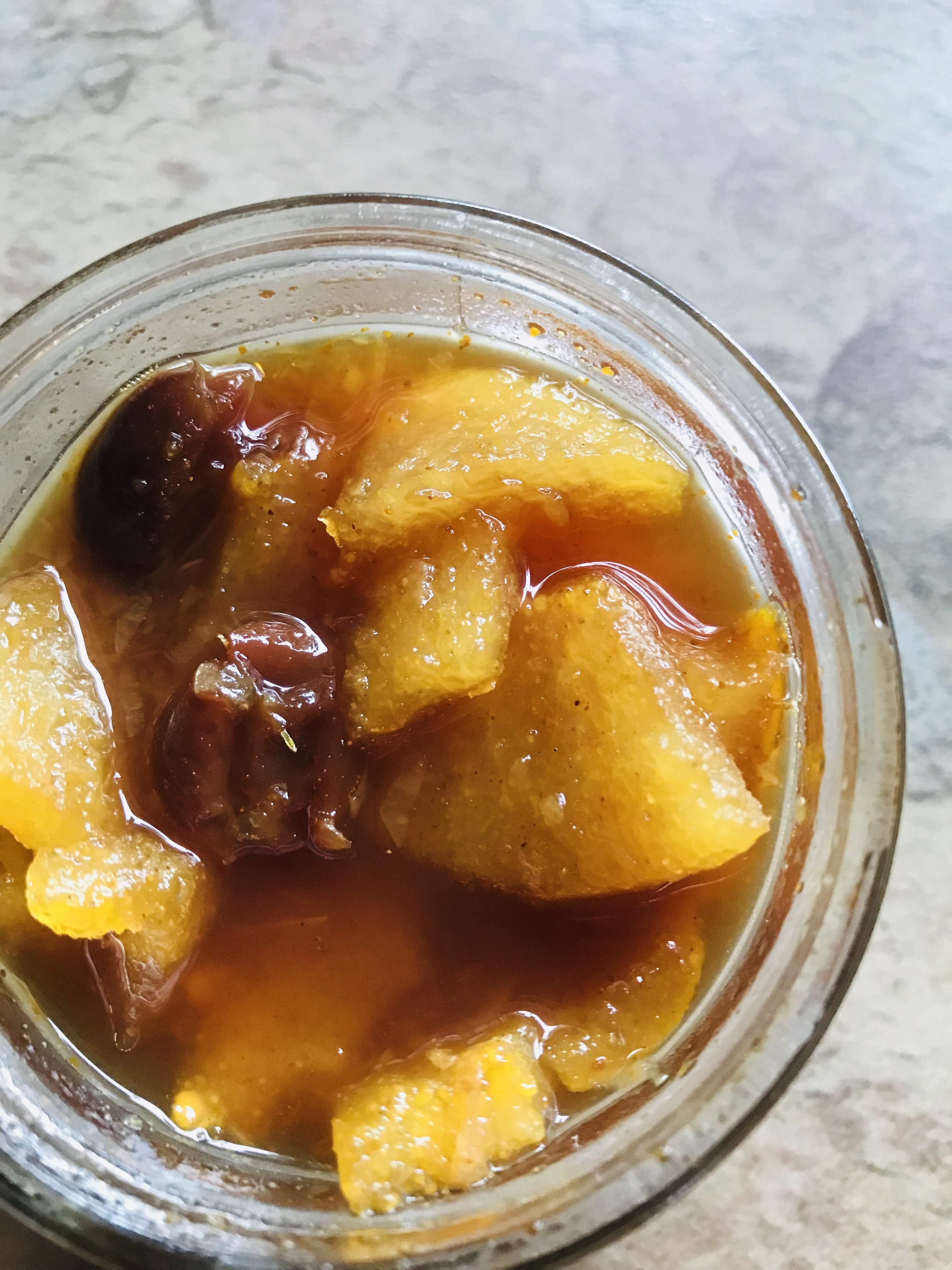I am a big fan of ethnic food, particularly anything from the Mediterranean. French, Italian, Spanish, North African and especially Moroccan. Mediterranean cuisine is so darn full of fresh, savory ingredients! I just can’t get enough. Moroccan food is particularly known for their national food the tagine, it has the unique taste of popular spices such as saffron, cumin (my favorite), cinnamon, ginger, and cilantro. Most recipes are healthy and loaded with vegetables. The delicious combination of mouth-watering flavors is what makes it unique…Oh, and what flavors!
This recipe is a stew that is on regular rotation at our house. The combination of butternut squash, red potato, chickpeas and spices works beautifully together; but the green olives give it not only a punch of color, but a salty counterpoint to the sweetness of the squash. The color of this dish alone is one of the reasons to try it. You can serve this stew over, couscous, rice or cauliflower rice (which is what I use). I also love to use my homemade cilantro-chili sauce, rather than fresh cilantro. You can find it on this blog under Indian Roasted Potatoes, February 2, 2021.
MOROCCAN STEW
INGREDIENTS:
- 1 tablespoon unsalted butter
- 1 tablespoon olive oil
- 1 medium yellow onion, medium dice
- 1 head garlic, cloves thinly sliced
- 3 teaspoons ground cumin
- 1 (3-inch) cinnamon stick
- Kosher salt & freshly ground black pepper to taste
- 1 pound butternut squash, large dice
- 3/4 pound (about 3 medium) red potatoes, large dice
- 2 cups chicken or vegetable stock (homemade will really add depth)
- 1 (14-ounce) can chickpeas, drained and rinsed
- 1 (14-ounce) can diced fire-roasted tomatoes
- Pinch of saffron
- Zest from one lemon
- 1 cup green olives, (I use Castelvetrano)
- Fresh cilantro leaves for garnish
- Toasted slivered almonds for garnish
- Plain Greek yogurt for garnish
- Your favorite hot sauce (optional)


INSTRUCTIONS:
- In a large Dutch oven, heat butter and oil over medium heat. Add onion, garlic, cumin, cinnamon, salt and pepper. Cook stirring occasionally, until spices are aromatic and onions are soft and translucent, about 5 minutes.
- Add squash and potatoes, stir to coat, and cook for about 3-5 minutes. Add stock, chickpeas, tomatoes with their juices, and saffron. Bring mixture to a boil then reduce heat to low. Cover and simmer for 10-15 minutes, or until squash and potatoes are fork tender.
- Remove from heat and add lemon zest and olives. Serve over grain of choice. Garnish with cilantro, almonds and yogurt.
Serves 4-6


“Ethnic diversity adds richness to a society.” –Gary Locke












































